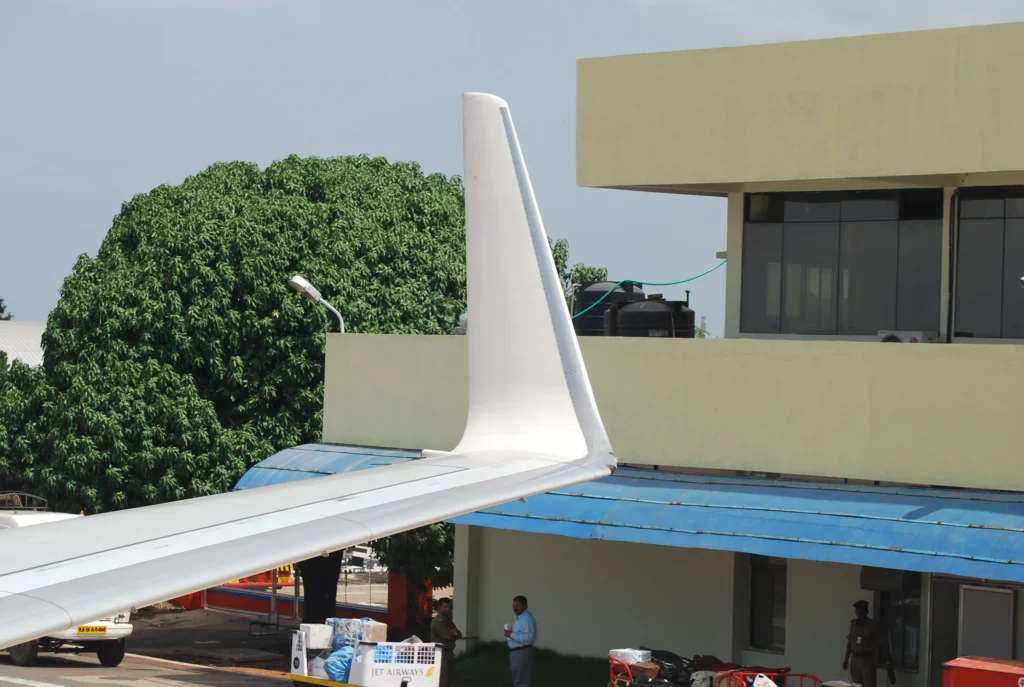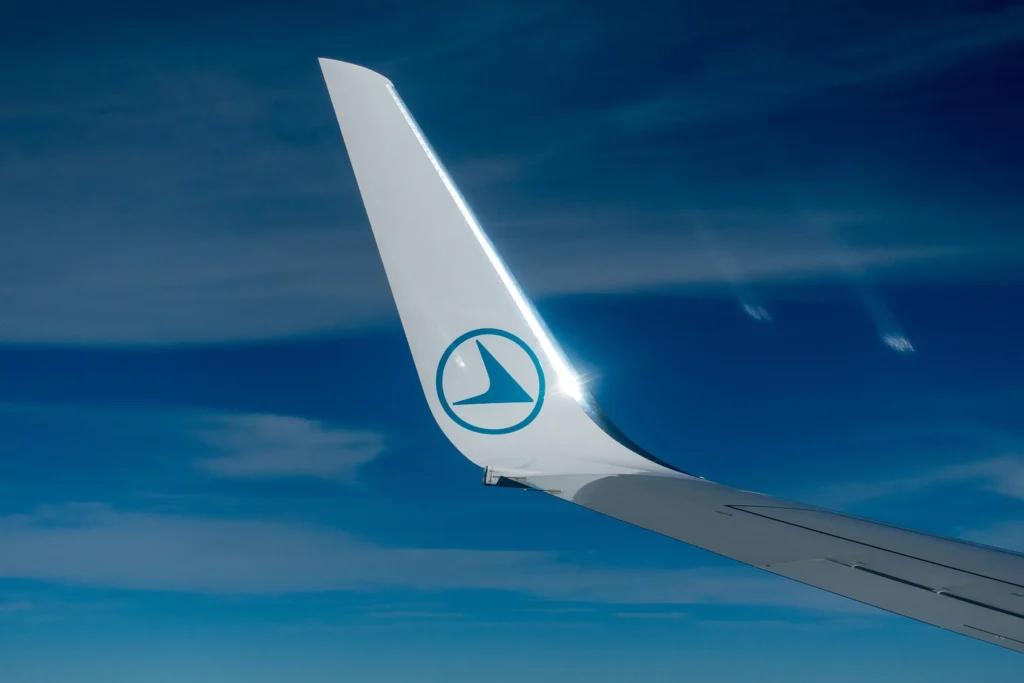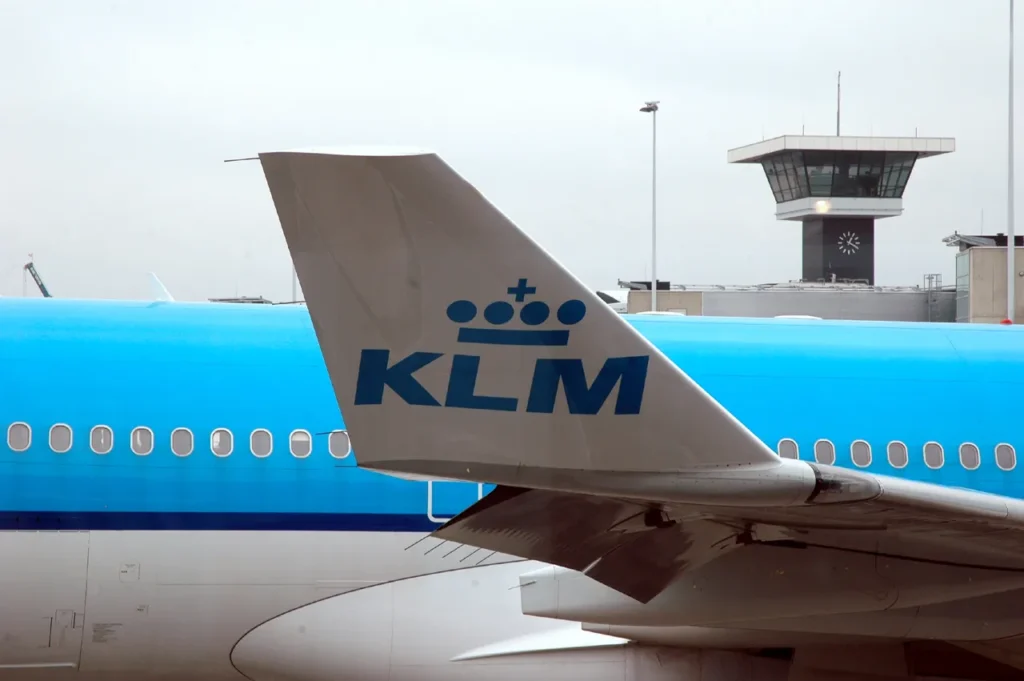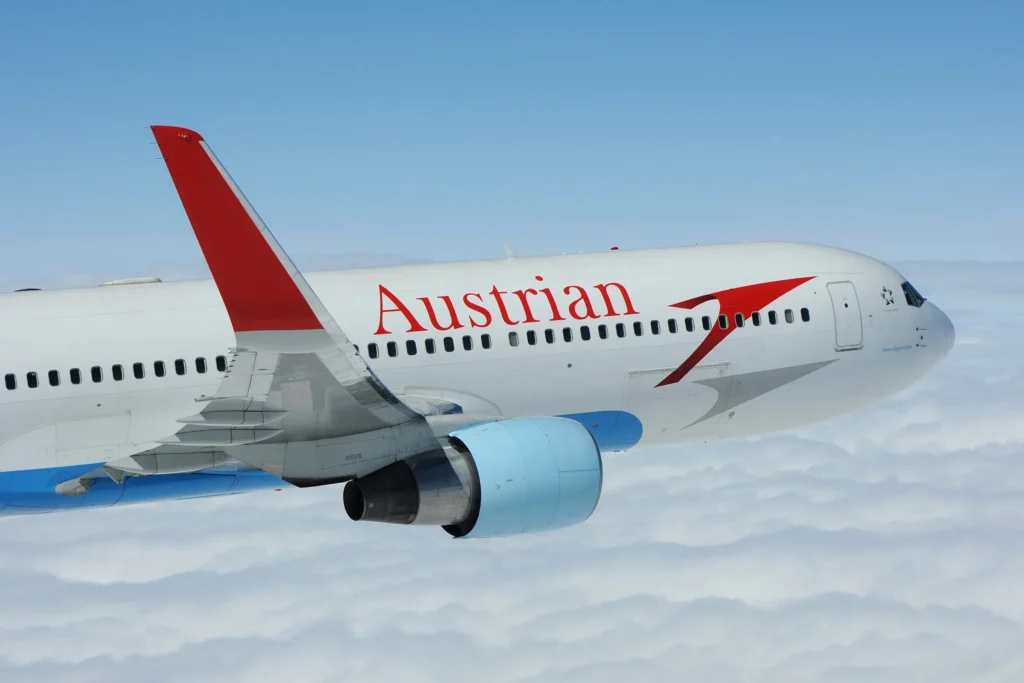
Winglet technology emerged as a transformative advancement for commercial aviation during the 1980s, following successful adaptation on smaller aircraft throughout the previous decade.
NASA Spinoff documented the introduction of enhanced wingtips to modern commercial jets, marking the beginning of widespread efficiency improvements across the industry.
The Boeing 747-400 and McDonnell Douglas MD-11 pioneered winglet implementation on large commercial aircraft by the decade’s end, establishing foundations for future technological developments.
The technology addressed fundamental aerodynamic challenges by reducing vortices created at wing tips, where high-pressure air below wings meets low-pressure air above. These vortices generate drag that increases fuel consumption, making winglet solutions economically attractive for airlines seeking operational cost reductions.
 Photo: By BriYYZ from Toronto, Canada – Asiana Airlines Boeing 747-400 | Wikimedia Commons
Photo: By BriYYZ from Toronto, Canada – Asiana Airlines Boeing 747-400 | Wikimedia CommonsBoeing Blended Winglets
Boeing launched the Next Generation 737 program in 1993, building upon the aircraft type’s commercial success while incorporating design improvements to compete effectively with the Airbus A320.
The manufacturer initially developed blended winglets for Boeing Business Jets before recognising broader commercial applications, flagged Simple Flying.
Aviation Partners collaborated extensively with Boeing during initial blended winglet development, conducting comprehensive testing on private aircraft before transitioning to commercial applications.
Boeing began testing blended winglets on the 737 in 1997, establishing technical foundations for mass deployment.
 Boeing 737 blended winglet; Photo- Premkudva | Wikimedia Commons
Boeing 737 blended winglet; Photo- Premkudva | Wikimedia CommonsSouthwest Airlines First 737 NG
Southwest Airlines (WN) introduced the first Next Generation 737 into service in 1998, demonstrating the aircraft’s enhanced capabilities.
Boeing opened blended winglet options to commercial operators in 2000, enabling airlines to retrofit existing aircraft and order new planes with efficiency-enhancing modifications.
The decision proved commercially successful as operators experienced significant operational cost reductions.
Southwest Airlines Boeing 737-700 aircraft equipped with blended winglets achieve annual fuel savings of approximately 100,000 gallons per aircraft, demonstrating substantial economic benefits.
 Photo: JFK Spotting
Photo: JFK SpottingAirbus Wingtip Solutions
Airbus equipped A320 aircraft with wingtip fences before Boeing introduced blended winglets, addressing efficiency concerns through different technological approaches.
These fence-style wingtips served similar aerodynamic purposes as modern Sharklets, though with reduced effectiveness compared to later blended designs.
The A320 program incorporated wingtip fences as standard equipment for most production aircraft, with only early models lacking this efficiency enhancement.
Airbus extended fence technology to A300 and A310 aircraft through retrofit programs, while the A380 received fence wingtips as a default configuration.
Despite early wingtip innovation, Airbus recognised superior efficiency potential in blended winglet designs. The manufacturer initiated collaboration with Aviation Partners in 2008 to develop blended winglet solutions for A320 family aircraft.
 Luxair Boeing 737-800 winglet; Photo- Self-photographed by Jwh | Wikimedia Commons
Luxair Boeing 737-800 winglet; Photo- Self-photographed by Jwh | Wikimedia CommonsLegal Controversies With Sharklets
Aviation Partners conducted initial A320 blended winglet testing in 2008, yielding disappointing performance results that concerned Airbus engineers. Subsequent flight tests using a JetBlue A320 produced significantly improved data, encouraging continued development efforts.
Airbus unveiled the Sharklet design following successful testing phases, but the announcement triggered legal action from Aviation Partners.
Aviation Partners alleged that Airbus copied proprietary blended winglet designs without authorization, initiating litigation against Airbus.
The legal dispute concluded with Airbus paying undisclosed financial settlements to Aviation Partners while retaining rights to continue Sharklet production. This resolution enabled Airbus to proceed with commercial Sharklet deployment across the A320 family aircraft.
 A320 Enhanced (A320E) prototype (F-WWIQ) with sharklets; Photo- Julian Herzog | Wikimedia Commons
A320 Enhanced (A320E) prototype (F-WWIQ) with sharklets; Photo- Julian Herzog | Wikimedia Commons Winglet Adoption Timeline
Fuel prices remained relatively low throughout the 1990s, reducing airline pressure to invest in efficiency modifications.
The September 11, 2001, attacks dramatically increased oil prices, creating stronger economic incentives for airlines to pursue fuel consumption reductions through technological improvements.
Airbus delayed blended winglet development partly due to existing wingtip fence technology already providing efficiency benefits. The manufacturer calculated that dramatic fuel price increases justified additional investment in more advanced winglet designs.
Boeing’s early winglet introduction capitalised on growing efficiency demands while establishing competitive advantages in the narrowbody market. Airlines embraced blended winglets as fuel costs became increasingly significant operational expenses.
 A330 Winglet; Photo- caribb | Flickr
A330 Winglet; Photo- caribb | FlickrPerformance Comparisons
Boeing 737 Next Generation winglets measure 8 feet 2 inches in height, matching Airbus A320 family Sharklet dimensions exactly. This dimensional similarity reflects aerodynamic optimisation requirements for narrowbody aircraft operating profiles.
Blended winglets typically deliver 4-6% fuel consumption reductions compared to aircraft without winglet modifications. These efficiency gains translate directly to operational cost savings, making winglet retrofits economically attractive for airlines.
Modern winglet variations include Boeing’s split scimitar design for 737 aircraft, featuring additional downward extensions from wingtips. The Boeing 737 MAX incorporates Advanced Technology winglets as standard equipment, representing continued technological evolution.
 Photo: Clément Alloing
Photo: Clément AlloingWidebody Aircraft Winglet
Widebody aircraft utilise different winglet designs compared to narrowbody implementations, typically employing canted winglets rather than blended configurations.
The Boeing 747-400 became the first commercial aircraft equipped with winglets, establishing precedents for long-haul aircraft efficiency improvements.
Airbus A330 and A340 aircraft feature canted winglets, while newer A330neo and A350 models incorporate shorter blended winglet designs. Boeing 767 operators frequently retrofit aircraft with blended winglets, demonstrating technology adaptability across aircraft types.
 Austrian Airlines Boeing 767- 300ER Winglet; Photo- Austrian Airlines
Austrian Airlines Boeing 767- 300ER Winglet; Photo- Austrian AirlinesLate Deployment
The first A320 equipped with Sharklets rolled out of Airbus facilities in 2012, according to Airport Technology, marking commercial deployment 12 years after Boeing’s initial winglet availability.
All A320neo family aircraft receive Sharklets as standard equipment, while many older A320s undergo retrofit installations.
Both manufacturers continue developing advanced winglet technologies, with next-generation designs promising further efficiency improvements.
The competitive dynamic between Boeing and Airbus drives continued innovation in aerodynamic enhancement technologies, benefiting airlines and passengers through reduced operational costs and environmental impact.
Stay tuned with us. Further, follow us on social media for the latest updates.
Join us on Telegram Group for the Latest Aviation Updates. Subsequently, follow us on Google News
Airbus Unveils New Narrowbody Aircraft Design, First Flight by 2030
The post Airbus Stole this Aircraft Technology from Boeing? appeared first on Aviation A2Z.














